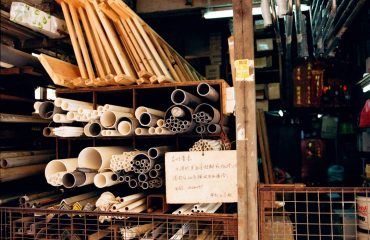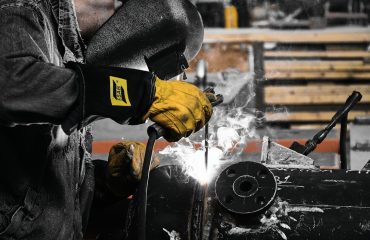body { font-family: sans-serif; line-height: 1.6; }
h1, h2, h3 { color: #333; }
img { max-width: 100%; height: auto; }
In today’s fast-paced world, efficiency and cost-effectiveness are paramount. Across various sectors, from construction and industrial manufacturing to commercial spaces, modular steel system solutions are revolutionizing how we design, build, and utilize structures. This comprehensive guide delves into the intricacies of these innovative systems, exploring their design, benefits, diverse applications, cost implications, and the future trends shaping their evolution.
Designing with Modular Steel: Precision and Flexibility
Modular steel systems are based on the principle of prefabrication. Individual steel components, meticulously designed and manufactured off-site, are assembled on-site like building blocks. This approach offers unparalleled precision. CAD software and advanced manufacturing techniques ensure components are perfectly aligned, minimizing errors and maximizing speed. The flexibility is equally remarkable. These systems can be adapted to virtually any design, accommodating unique architectural requirements and specific project needs. Whether it’s a simple warehouse expansion or a complex multi-story building, modular steel provides the adaptability to meet the challenge.
Furthermore, the design process itself is streamlined. Detailed 3D models allow for comprehensive visualization and analysis, identifying potential issues early on and preventing costly rework. This collaborative design process, involving engineers, architects, and contractors, ensures seamless integration and optimized performance.
The Advantages of Modular Steel: Speed, Strength, and Sustainability
Modular steel systems offer a multitude of advantages compared to traditional construction methods. The most significant benefit is speed. Prefabrication drastically reduces on-site construction time, leading to faster project completion and quicker return on investment. This accelerated timeline also minimizes disruption to surrounding areas, making it ideal for urban environments.
Strength and durability are inherent qualities of steel. Modular steel structures are robust, capable of withstanding significant loads and environmental stresses. They offer superior resistance to fire, earthquakes, and other natural disasters, ensuring long-term structural integrity and safety.
Sustainability is another key advantage. Steel is a highly recyclable material, contributing to a reduced environmental footprint. The precise fabrication process minimizes material waste, further enhancing the environmental benefits. Modular design also allows for easy disassembly and reuse of components, promoting a circular economy.
Applications of Modular Steel: From Warehouses to High-Rise Buildings
The versatility of modular steel systems makes them suitable for a vast array of applications. In the industrial sector, they are commonly used for warehouses, factories, and manufacturing plants. Their ability to create large, open spaces with high load-bearing capacity makes them ideal for heavy machinery and storage.
Commercial applications include offices, retail spaces, and multi-story buildings. Modular steel allows for the creation of aesthetically pleasing and functional structures, meeting the diverse needs of businesses. The speed of construction is particularly advantageous in fast-growing urban areas, allowing businesses to quickly establish their presence.
Beyond these sectors, modular steel finds application in temporary structures, emergency housing, and even specialized facilities like data centers and laboratories, where precise environmental control is crucial.
Cost-Effectiveness of Modular Steel: A Comprehensive Analysis
While the initial investment in modular steel may seem higher than traditional methods, the long-term cost-effectiveness is undeniable. The speed of construction translates into significant savings on labor costs and project timelines. Reduced waste and efficient material usage further contribute to cost reduction. Moreover, the durability and longevity of steel structures minimize maintenance and repair costs over the lifespan of the building.
The precise nature of prefabrication minimizes on-site errors, avoiding costly rework and delays. This streamlined process provides greater predictability in project budgeting and scheduling, reducing financial risks and enhancing project control.
Future Trends in Modular Steel: Innovation and Integration
The future of modular steel systems is bright, driven by continuous innovation and integration with advanced technologies. The adoption of Building Information Modeling (BIM) is improving design collaboration and precision. Automation in manufacturing processes is further enhancing efficiency and reducing errors. The integration of smart technologies, such as sensors and IoT devices, is creating intelligent structures capable of self-monitoring and optimizing performance.
Sustainable practices are also shaping the future of modular steel. The use of recycled steel and the development of more environmentally friendly coatings are contributing to a reduced carbon footprint. Research into new steel alloys and fabrication techniques is pushing the boundaries of strength, durability, and sustainability.
In conclusion, modular steel system solutions offer a compelling blend of efficiency, strength, sustainability, and cost-effectiveness. Their versatility makes them suitable for a wide range of applications, and ongoing innovations are poised to further enhance their capabilities. As the construction and industrial sectors continue to seek faster, more sustainable, and cost-effective solutions, modular steel systems are set to play an increasingly significant role.
SEO Tags:
Modular Steel, Steel Building Systems, Prefabricated Steel Structures, Modular Construction, Sustainable Construction




